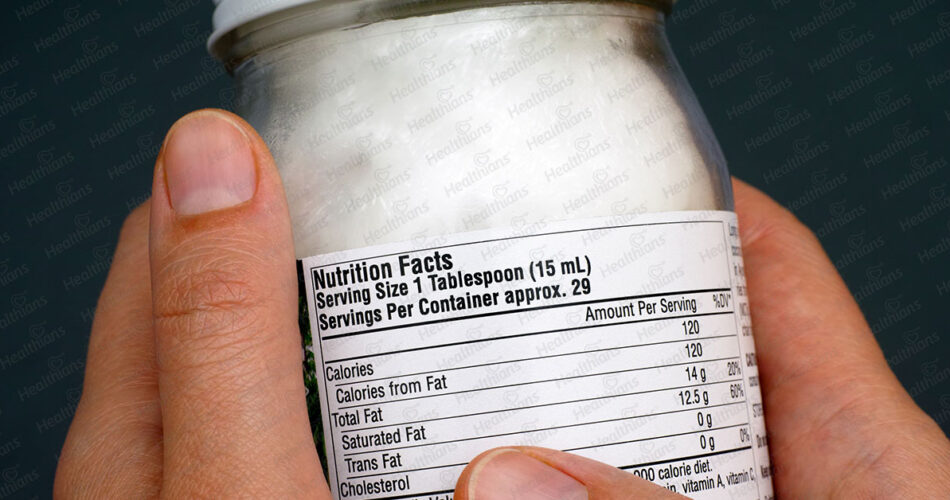Grocery shopping is our guilty pleasure. There, we said it. Probably one of the most relatable things you could ever hear. Let’s just face it, if there’s one fun household chore, it is probably grocery shopping. After all, you get to pick from an endless variety of food items, you feel spoilt with choice.
And the result? You don’t just go overboard with your budget, but you end up bringing a lot of things you don’t even look back on. They just sit there in the kitchen cabinets, waiting to be picked by you, until they expire. Not only do we pick the most useless things but also some of the most-unhealthy ones.
As health-conscious people, some of you may argue that you pick only the healthiest items. But are you sure they are healthy? Are you sure you aren’t being deceived?
Well, our first instinct is always to look at the price. But what about the food labels? Marketing gimmicks and product by-lines may fool you, but food labels don’t. They are your friends who always speak the truth (if they don’t, they are in for lawsuits)
So, if you are somebody who has decided to eat healthy, you must start with reading food labels. If you don’t know how, consider this guide a godsend in that regard.
Start with the serving size:
The serving size is the foundation of food label reading. It tells you the amount of food the label’s information refers to. Pay attention to this, as it affects all the other values listed on the label. Sometimes, what seems like a single-serving package might contain multiple servings, so be cautious when assessing calorie and nutrient content.
Calories:
Calories indicate the amount of energy you’ll get from one serving of the product. Depending on your dietary goals, you may want to choose foods with higher or lower calorie counts. For example, if you’re trying to maintain or lose weight, you might opt for products with lower calorie counts.
Nutrient list:
Next, scrutinise the nutrient list. This section provides information about various nutrients found in the product. Look for the following key nutrients:
Fats:
Pay attention to the total fat content and the types of fats present. Saturated and trans fats are generally considered less healthy than unsaturated fats. Try to limit your intake of saturated and trans fats.
Cholesterol:
Keep an eye on cholesterol levels, especially if you’re concerned about heart health. High cholesterol intake can contribute to cardiovascular issues.
Sodium:
Excessive sodium intake can lead to high blood pressure. If you’re monitoring your sodium intake, opt for products with lower sodium levels.
Carbohydrates:
Carbohydrates include dietary fibre, sugars, and starches. Dietary fibre is beneficial for digestion and can help you feel full, while excessive added sugars can contribute to various health issues. Look for products with high fibre and low added sugar content.
Protein:
Protein is essential for building and repairing tissues. Consider your protein needs when evaluating products, especially if you have dietary preferences like vegetarianism or veganism.
Percent Daily Value (%DV):
The %DV provides a quick reference point for assessing the nutrient content in a serving of food. It’s based on a daily diet of 2,000 calories, which is a typical reference point, but it may not be appropriate for everyone. Use the %DV as a general guideline to determine whether a product is high or low in specific nutrients.
Ingredients list:
The ingredients list is where you’ll find all the components of the product, listed in descending order by weight. Pay attention to this list, as it can reveal important information about the product’s quality and nutritional value. Look for these tips:
Short and pronounceable ingredients:
Generally, products with shorter ingredient lists that consist of recognisable, pronounceable ingredients are healthier choices.
Whole grains:
If you’re buying grain-based products, such as bread or cereal, make sure whole grains are listed as the first ingredient.
Added sugars:
Be aware of different names for added sugars, such as high fructose corn syrup, cane sugar, and honey. If sugar is one of the first ingredients, the product likely contains a significant amount of added sugars.
Allergen information:
Food labels are required to highlight common allergens, such as milk, eggs, peanuts, tree nuts, soy, wheat, fish, and shellfish. If you have allergies or sensitivities, carefully review the allergen information to avoid potential health risks.
Health claims and marketing buzzwords:
Food packaging often includes health claims and marketing buzzwords designed to catch your attention. Phrases like “low-fat,” “organic,” “gluten-free,” and “natural” may influence your purchasing decisions. However, it’s essential to look beyond the marketing and check the actual nutrient content and ingredients to ensure they align with your dietary goals.
Understanding expiration dates:
Food labels also include information on expiration dates. These dates help ensure food safety and quality. Look for the “best by” dates as they suggest when the product is at its peak quality. These dates can guide your decisions on when to purchase and consume perishable items.
Consider the environmental impact:
In addition to personal health, you may want to consider the environmental impact of your food choices. Look for labels indicating sustainability certifications, such as USDA Organic or Fair Trade, which reflect practices that are more eco-friendly and socially responsible.
Compare similar products:
When selecting between similar products, take a moment to compare their nutritional profiles. Even subtle differences can make one product a better fit for your dietary needs and preferences than another.
Closing thoughts
Health starts at grocery aisles. You cannot say you are a health-conscious person if you aren’t paying good attention to your food labels.
So, if you aren’t reading food labels already, start today. After all, it’s all about your health. Make wise and healthy decisions for a healthier tomorrow!




